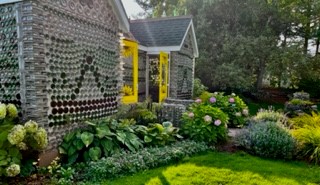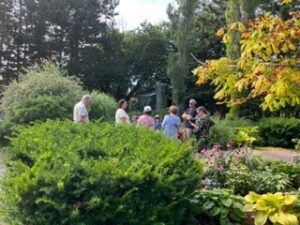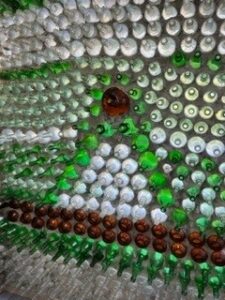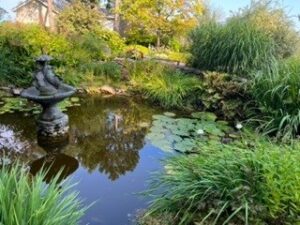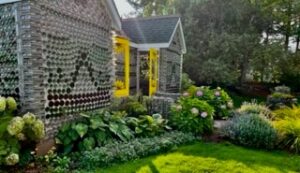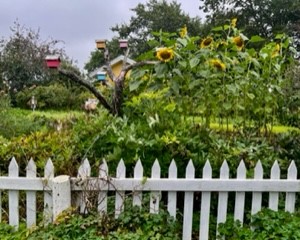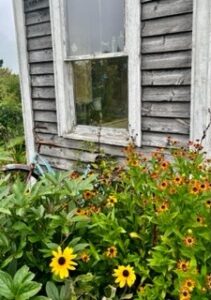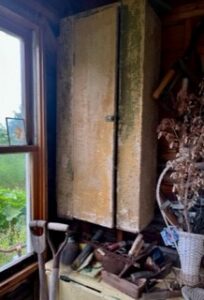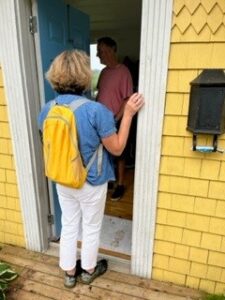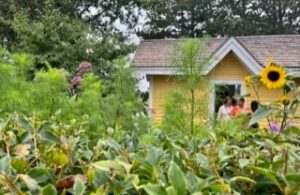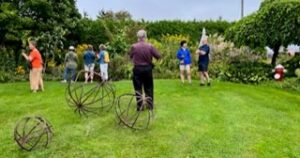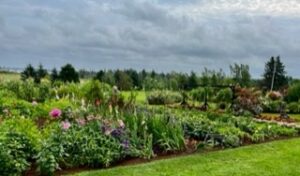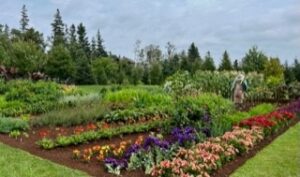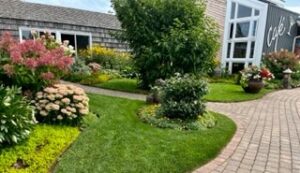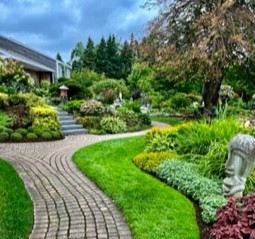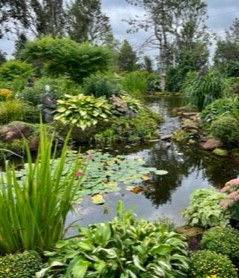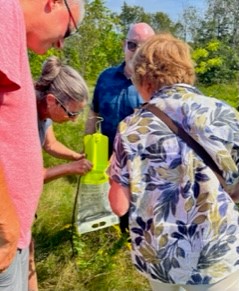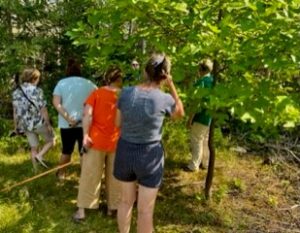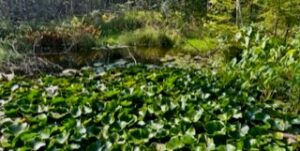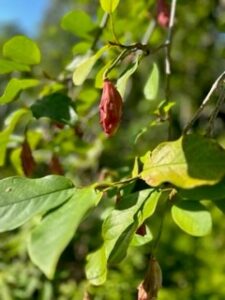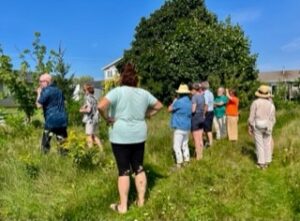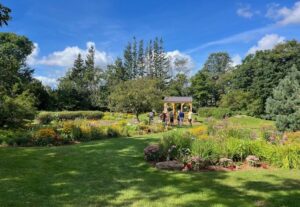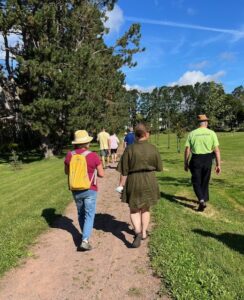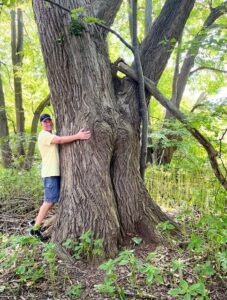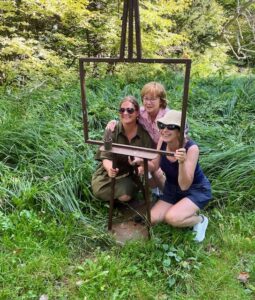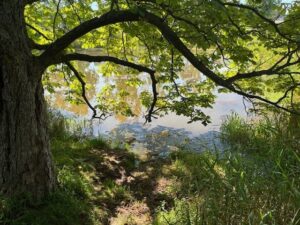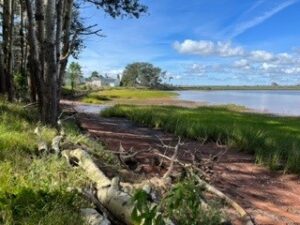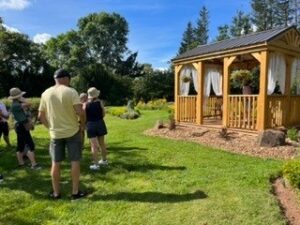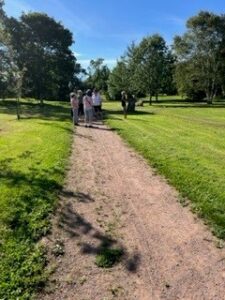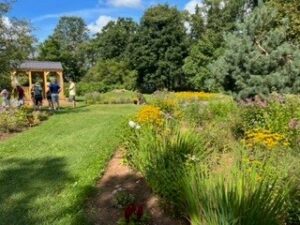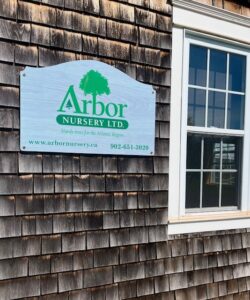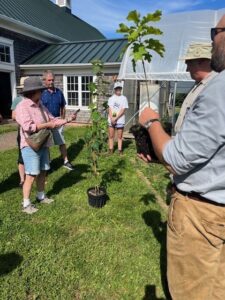A warm and fine weekend greeted many members of the AALD the weekend of September 8, 9th and 10th in PEI.
In attendance were: Jane Rostek, Jim Sharpe, Ann-Marie Brewer, Peter Reid, Catherine Deveau, Kelly Grant, Keith Thompson, Dessie and Bob Howard, Jane Plant, Ellen Ruddick, John Foster and Jackalyn Darling.
The first stop was the Bottle Houses in Wellington, a 20-minute drive from Summerside. This was a first visit for many of us and featured lovely gardens surrounding four buildings made entirely of recycled bottles, all built by Edouard Arsenault. From 1980 to 1984, he cemented over 25,000 bottles of various shapes, sizes and colours into four fantasy like buildings. The bottles were collected from the local dance halls, the Legion, restaurants and the dump.
After Edouard’s death in 1984, his daughter Rejeanne developed the Bottle Houses designation until 2017. She led the design and care of the gardens and the gift shop on the premises. It is owned and maintained currently by Angie Cormier, who worked at the bottle houses during her teen years. For more information, visit www.bottlehouses.com.
After a short rest, we proceeded to enjoy the fine food at the 511 West restaurant in Summerside.
Saturday morning our entourage met at the private garden of Betty Lou Frizzel in Pleasant Valley, a half hour drive from Summerside. Betty is a plants person and former President of the Charlottetown Garden Club. Betty Lou entertained us with her comical stories of the area and her gardens for the next 2 hours. Her 3-acre property is located on the highest and middle point in PEI, so it is quite windy there. The trees there were all planted by Betty and her husband to create some windbreaks. She showed us some wind damage to the trees from Fiona’s high winds from last year. She has a large collection of Hostas- over 550 different varieties as well as a large daylily collection. The white ornate Obelisks were built by Hal Forest of Halifax. Some notable plants featured were masses of Japanese Anemone, which the bees loved, a dwarf Larch and a dwarf Ginkgo. We enjoyed entering the many outbuildings on the property particularly the outhouse which had a nice large window overlooking the gardens. Check out Betty’s Facebook page under Betty Lou Frizzell Abbott for her album titled ‘Perennial Pleasures’, which, despite the name, features an assortment of ornamental trees, shrubs perennials and vines throughout the garden. Thank you, Betty Lou!
Our group then proceeded to the Dunes Gardens and Café a short drive away to Brackley Beach. The gardens began as a private garden for the owner, Peter who is a potter. The initial design was by him and he had a strong influence by Bali. The main focus is on the ponds and the ornate wooden benches spread around the property. It leans towards old school gardening with lots of edging and no mulch. There is a large vegetable garden there as well which helps to supply the restaurant. They make extensive use of mushroom compost to enrich the soil. From 80 to 100 thousand people visit the Dunes each year. Following our tour, we ate at the Dunes restaurant and visited the extensive gift shop.
Saturday afternoon we met at David Carmichael’s Arboretum in New Dominion, about a half hour drive from the Dunes. The sun at this point had broken through and temperatures were soaring at 30+ degrees. David is a graduate of the Landscape Horticulture program in Truro, NS and has had several notable positions- some of which include 30 years working with the Province of PEI as a Horticulturist. His service commenced at the Bunbury Nursery in 1990 and included providing retail sales, extension services and cultural information for native and non-native trees, shrubs, vines, annuals and perennials to the general public, industry and government agencies. He has published 2 books and volume 1 of 2 of his third book to date. A fourth book may be in the works! Here is the link to his website. PEI Plant Doctor.
David’s arboretum is 18 acres of mostly woodland areas that is open to the public started in 2019 and features a diverse selection of woody plants hardy to zones 5a and 5b with some plants reaching into Zone 7 plants. The primary purpose of this project is to provide educational sessions and tours to interested individuals, groups, industry and academia. The woodland is 2/3 forest with upland areas and a lowland area with a pond. Most of the plants have been grown from seed or by cuttings. Our group walked most of the property and we saw some rare selections such as Amelanchier frenaldii (Fernald’s Serviceberry), Amelanchier ovalis (Snowy Serviceberry), Tilia tomentosum (Silver Linden), Photinia villosa (Oriental Photinia) and Leycesteria formosa (Himalayan Honeysuckle) which is a Zone 7 plant. We also saw Cladustris lutea or Yellowwood, Rhodotyphos scandens (Black Jetbead), Camellia, which is a Zone 7 plant, Nyssa sylvatica (Black Gum), Calycanthus floridus (Carolina allspice), Rhododendron brachtyanthum or Shortflowered Rhododendron, Castanea dentata (American chestnut), Rhododendron maximum (Rosebay Rhododendron) and R. Carolina, Oxydendron arboretum or Sourwood, Heptacodium miconioides or Seven Sons Flower and Seiboldi Magnolia. We also observed Paulonia or Royal Empress Tree and Cercis canadensis (Eastern Redbud) plus many of the native woody plants of PEI.
We concluded our tour with a much-needed water break and then on to Charlottetown for supper at the Salt and Sol Restaurant. Thank you to David for this tour!
Sunday dawned bright and warm again and we met at the Robert Cotton Memorial Park in Stratford, just outside of Charlottetown where we had a guided tour by Heidi Wood, Horticulturist for the Town of Stratford, and David Carmichael. The Park consists of 16 acres dedicated to the memory of Robert Cotton- 1880 to 1968 was an entrepreneur, naturalist and philanthropist. The Cotton/Bunberry Nursery, established in 1945, was started by Cotton on this site to distribute nursery stock to beautify the rural areas of the province and ran for 50 years. By 1996, there were a large number of nurseries in operation so the province closed the nursery. In 1998, the province turned the property over for use as a public recreational park in perpetuity. Presently there is a butterfly garden, a memorial garden, a fruit garden and an arboretum plus a community garden and the original barn and outbuildings. Many of the trees on site were planted 60 to 80 years ago.
Heidi used to visit here as a child and is new in this position so she has begun the transformation of the abandoned gardens. Of note we saw a Prunus sargentii (Sargent’s Cherry), which is a recommended tree for our region, a large Dawn Redwood (Metasequioa glyptostroboides) and a Magnolia virginiana (Sweetbay Magnolia) as well as a planting of mature Populus deltoides or Cottonwood trees. Thank you to Heidi and David for the tour!
We had lunch at a nearby café in Stratford and headed to Arbor Nursery in Vernon Bridge, a 40-acre nursery that produces the largest selection of native and ornamental trees in the Maritimes. Jan Matjuck is the owner and we met him and the nursery manager, Griffin for a walk about the nursery. This nursery, which is over 20 years old, focuses on native trees and good structured cultivars and hybrids. Jan has a keen interest in soil health and soil life via composting/worm castings and introducing soil life to his soils via humus and compost teas. Their clientele are large land owners, landscapers and municipalities. They use green covers such as clovers and grasses and wood chips vs. bare soil, which has no microbiology under their nursery trees. Visit their website for more information- www.arbornursery.ca.
After our goodbyes we all set off in our various directions to head back home.
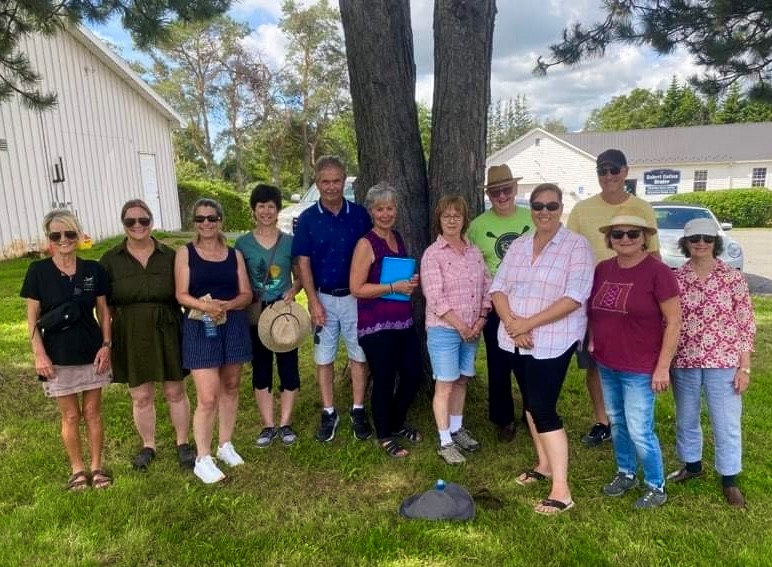
Thanks to our organizers and our tour guides for another great Maritime visit!
Jackalyn Darling
